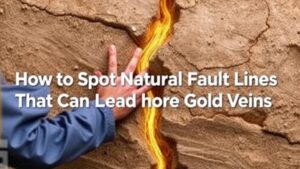Understanding the Connection Between Silver and Volcanogenic Massive Sulfides (VMS)
Understanding the Connection Between Silver and Volcanogenic Massive Sulfides (VMS)
The relationship between silver and volcanogenic massive sulfides (VMS) is a critical aspect of mineralogy and geology that influences mining practices, resource exploration, and economic development. VMS deposits are significant sources of not only copper, lead, and zinc but also precious metals such as silver and gold. This article explores how silver is associated with VMS deposits, the geological processes involved, and the implications for mining and sustainability.
What are VMS Deposits?
Volcanogenic massive sulfides are hydrothermal deposits formed on or near seafloors in volcanic environments. typically consist of sulfide minerals that precipitate from seawater, enriched with metals due to volcanic activity. Key characteristics of VMS deposits include:
- Formation in submarine volcanic settings.
- Composition mainly includes copper, lead, zinc, and precious metals like silver and gold.
- Association with basaltic host rocks.
The formation of VMS deposits is generally associated with hydrothermal systems where heated seawater interacts with underlying volcanic rocks, leading to the precipitation of minerals as the hot fluids cool.
The Role of Silver in VMS Deposits
Silver is commonly present in VMS deposits as a byproduct of base metal mining. The presence of silver in these deposits can often be attributed to its geochemical affinity for sulfide minerals such as sphalerite (zinc sulfide) and galena (lead sulfide). following points highlight the significance of silver in VMS:
- Geochemical Association: Silver is typically found in polymetallic VMS deposits along with copper, lead, and zinc. Its occurrence can enhance the economic viability of mining operations.
- Economic Importance: In many VMS mining projects, silver can represent a substantial portion of the total metal value. For example, the Kidd Creek Mine in Canada produced over 200 million ounces of silver alongside copper and zinc.
- Market Dynamics: The demand for silver in various industries, including electronics and photovoltaics, makes VMS deposits attractive for investment, especially in regions where silver prices are trending upward.
Examples of Silver-rich VMS Deposits
Several notable VMS deposits around the world have demonstrated significant silver content:
- The Flin Flon-Snow Lake Area: Located in Canada, this region has produced substantial amounts of silver from VMS deposits, contributing to its status as a major mining camp in North America.
- The Izok Lake Deposit: Found in Nunavut, Canada, Izok Lake is notable for high concentrations of silver, with an estimated silver grade of around 300 grams per tonne.
- The Pogo Mine: Located in Alaska, the Pogo Mine is a significant producer of gold and silver, and its mineralization is related to VMS processes.
Geological Processes Influencing Silver Enrichment
The geological context of VMS deposits plays a crucial role in the concentration and distribution of silver. following processes are essential:
- Hydrothermal Activity: The movement of hydrothermal fluids through volcanic rocks can carry dissolved metals, including silver, which precipitate out under specific conditions.
- Redox Conditions: The oxidation-reduction environment in the subseafloor influences the types of minerals that precipitate, affecting silvers presence.
- Cooling Rates: Rapid cooling of metal-rich hydrothermal fluids leads to the formation of dense, mineral-rich sulfide deposits where silver can accumulate.
Environmental Considerations and Sustainable Mining
With increasing scrutiny on mining operations’ environmental impact, sustainable practices are essential. The extraction of silver and other metals from VMS deposits poses ecological challenges, including:
- Water pollution from tailings and runoff.
- Habitat destruction from mining activities.
- The potential for acid mine drainage, which can leach metals into groundwater systems.
To minimize these impacts, mining companies are increasingly adopting sustainable practices, such as:
- Useing advanced waste management systems.
- Conducting environmental impact assessments prior to mining.
- Restoring habitats post-mining operations.
Conclusion
Understanding the connection between silver and VMS deposits is integral to both the mining industry and resource management. As the demand for silver continues to grow across various sectors, the exploration and sustainable development of VMS deposits will remain a focal point for geologists and mining companies alike. By recognizing the key geological processes, environmental impacts, and economic significance of these minerals, stakeholders can make informed decisions that balance profitability with ecological responsibility.



